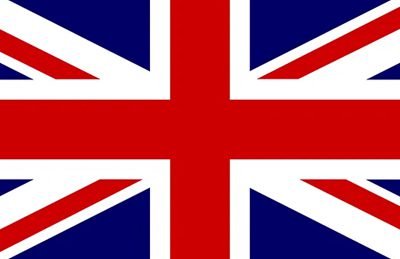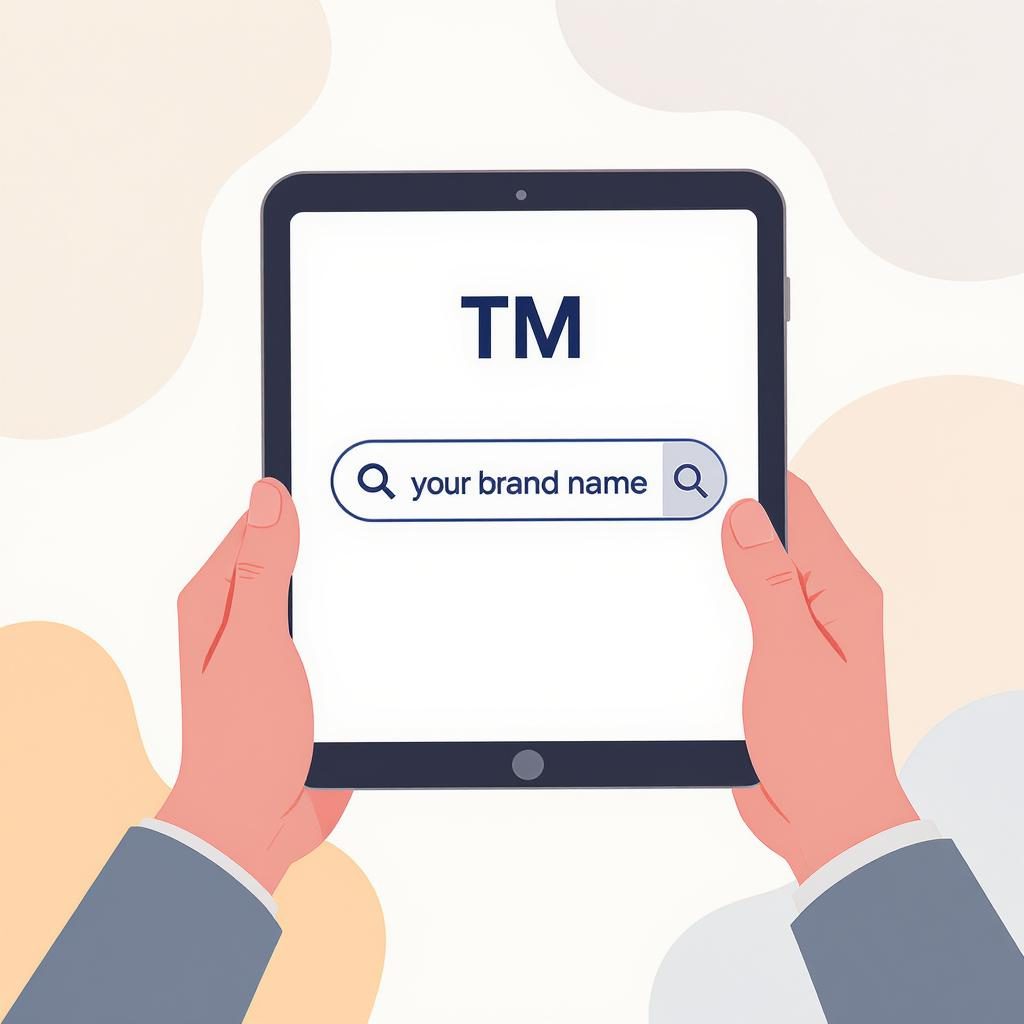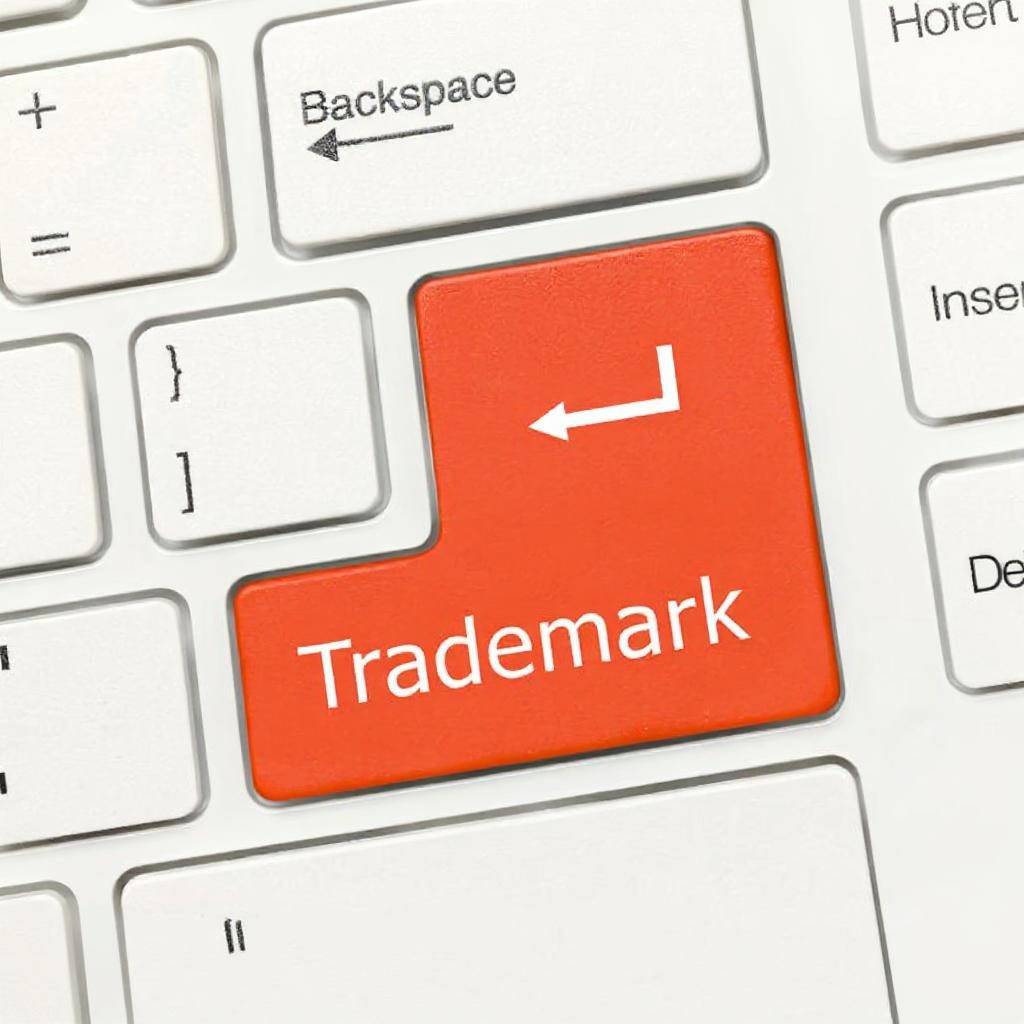
Brand Registration Guide in 2025
In the fast-evolving world of business and intellectual property, timing is everything. Whether you’re launching a startup, building an e-commerce empire, or growing a legacy brand, 2025 presents a rare


The United Kingdom offers one of the fastest and most efficient trademark registration processes in the world. With the UK Intellectual Property Office (UKIPO), applications are often processed within just a few months. Many Amazon sellers register here to gain quick access to Amazon Brand Registry. A UK trademark, however, only provides protection within the UK and does not replace registration in other countries like the US. Working with an experienced trademark attorney ensures your application is filed correctly and your brand is fully protected. For a smooth and reliable registration process, the UK remains a top choice.
We collaborate with trusted UK representatives and chartered trademark attorneys to assist you with trademark registration and opposition matters efficiently
The prices are in USD$ for the UK
Covers filing your application and reporting the progress all the way to registration. 2 classes included. This is our entry-level package.
Covers full trademark registration, including reporting and responding to non-substantive examiner’s objections and free re-filing.
Covers all aspects of trademark registration, including responding to all examiner’s objections and free re-filing. More free extras.
The “ALL IN” package includes government fees, handling responses to examiner’s objections (office actions), opposition proceedings, and free re-filing, along with additional services to ensure smooth trademark registration and protection.
If an office action is received, we will notify you and provide an estimate to respond based on our hourly rate. Whenever possible, we aim to offer a flat fee for the response.
If your funds are limited and our free UK trademark search reveals no obstacles to registration, you can proceed confidently with your trademark application.
The package covers everything included in the “SAIL THROUGH” package plus reporting and responding to non-substantive (procedural) office actions and free re-filing if your mark is refused by the UK Trademarks Office.
Free re-filing under our “SAIL THROUGH” package means you’ll only pay government fees, while we waive professional fees. For more details, please check our FAQ section.
The maximum number of classes included is 2, with a professional fee of $50 for each additional class beyond that
The “BELLS AND WHISTLES” package includes government fees, handling substantive office actions (examiner’s objections), opposition proceedings, free re-filing, and additional extras to ensure full support throughout the trademark registration process.
The most popular package offers peace of mind and budget predictability by covering all key trademark registration steps and potential issues upfront.
We will handle non-substantive office actions for free. Additionally, if your trademark is refused, you can file for a different trademark with our professional fees waived.
If your trademark is refused,
We’ll file another – fee excused.
This package covers everything included in the “ALL IN” package, plus reporting and responding to all examiner’s objections and free re-filing.
Free re-filing under our “ALL IN” package means you will be responsible for government fees, but we will waive professional fees. For more details, please check our FAQ section.
The maximum number of classes allowed is unlimited.
This package is recommended if a UK trademark search revealed potential obstacles to your registration and is ideal for applications that include many classes, providing comprehensive support to navigate challenges and cover multiple classes effectively
This package includes handling all office actions for free. If your trademark is refused, you can file a different trademark with our professional fees waived. It offers complete peace of mind and budget predictability. For more details on why this package is the best, please refer to the full description.
If your trademark is refused,
We’ll file another – fee excused.
In the UK, government fees are GBP 170 for the first class and GBP 50 for each additional class. When filing a logo, it must be filed in a specific color, unlike in the US and Canada where black and white filings cover all colors. Up to 6 color variations are allowed; 2 variations are free, and each additional color variation incurs a government fee of GBP 50

Since Brexit, UK and EU trademarks are separate. EU trademarks no longer protect the UK, and UK trademarks don’t cover the EU. You must use and enforce your trademark separately in each territory. Failure to use a trademark in either region for five years (by the end of 2025) can lead to loss of rights.
The legal requirements for signing a power of attorney (POA) in Pennsylvania include:
Common reasons a UK trademark application might be refused are:
The mark lacks distinctiveness or is too descriptive or generic.
It is similar or identical to an existing registered trademark, causing likely confusion.
The mark contains offensive, prohibited, or misleading content.
The application does not meet formal requirements like proper classification or payment of fees.
Book an initial phone consultation with our experts to discuss your trademark needs and the best package for you.
Request a free preliminary trademark search to get an early indication of whether your trademark is likely to be registrable. This basic search helps identify any obvious conflicts before you invest further.
Buy a trademark package immediately to begin the registration process without delay. Our pricing is transparent and available directly on our website.
What happens after you purchase a trademark package?
We’ll confirm your order and begin working on your case.
A comprehensive trademark search will be conducted to assess the registrability of your mark. We’ll provide detailed advice on how to improve your chances if any issues arise.
If your trademark is clear, we’ll proceed with filing your application and manage the registration process on your behalf.
If your trademark faces challenges, you have three choices:
Request a full refund;
Choose a different name with our guidance and free additional searches until we find a registrable option;
Proceed with the filing despite the risks.
The quickest way to register a trademark for Amazon Brand Registry purposes is to use the Amazon IP Accelerator program, which connects you with trusted trademark attorneys who can help file your trademark application quickly and at competitive rates. This allows you to start benefiting from Brand Registry protections while your trademark application is still pending.
To enroll in Amazon Brand Registry, you need either an active registered trademark or a pending trademark application issued by a recognized government intellectual property office. The trademark must be a text-based (word mark) or image-based mark that includes words, letters, or numbers.
Once you have your trademark registration or application number, you can create a Brand Registry account, provide your brand details, upload images of your product with the brand name or logo, and submit your application. Using the IP Accelerator program can significantly speed up this process compared to filing a trademark independently
The key steps and requirements for renewing a trademark in the EU or the UK are:
Timing: You can apply to renew your trademark up to six months before it expires. The trademark is valid for 10 years and can be renewed indefinitely for successive 10-year periods.
Notification: The EUIPO (for EU trademarks) or the UKIPO (for UK trademarks) will send a renewal reminder to the trademark owner or their representative.
Renewal application: Submit a renewal request online through the relevant trademark office’s website.
Payment: Pay the renewal fee, which depends on the number of classes your trademark covers. If you renew after the expiry date but within a six-month grace period, an additional 25% surcharge applies.
Grace period: If you miss the renewal deadline, you have a six-month grace period to renew with the surcharge. After this, the trademark will be cancelled and removed from the register.
Partial renewal: You may renew only some classes of goods or services if desired, allowing flexible management of your trademark portfolio.
Confirmation: Once renewal is processed, you receive confirmation, and your trademark protection continues without interruption.
You generally cannot register a purely geographically descriptive trademark in the UK if it directly indicates the origin of the goods or services and is well known to consumers for those products. Such marks are usually refused because they lack distinctiveness. However, if the geographic name is not commonly associated with the goods/services or if you can prove the mark has acquired distinctiveness through use, registration may be possible. Also, the mark must not be misleading about the product’s origin or conflict with protected Geographical Indications (e.g., Scotch Whisky).
To choose the correct trademark classes for your goods or services, you should:
Identify the specific goods or services you want to protect.
Use the Nice Classification system, which divides goods into Classes 1–34 and services into Classes 35–45. Each class has a general heading describing the types of goods or services included.
Select the class or classes that best match your products or services to ensure your trademark covers the right areas.
Use official tools like TMclass or consult classification manuals to find precise terms and avoid delays.
Remember, you cannot add new classes after filing, so choose carefully to cover both current and planned uses.
When deciding whether to file a word mark or a logo trademark, consider the following:
Word Mark: Protects the brand name itself in standard characters, regardless of font, style, size, or color. It offers broader protection because it covers the wording in any design or format. This means you can change the logo’s style over time without losing trademark rights as long as the wording stays the same
Logo (Design) Mark: Protects the specific visual design, including stylized fonts, colors, and graphic elements. It is ideal if your logo’s unique look is a key part of your brand identity. However, protection is limited to the exact design registered, so changes to the logo may require new filings
Which to choose?
If your brand name is unique and you want broad protection for the name itself, a word mark is usually the best choice. If your logo’s design is distinctive and important to your brand, consider registering a logo mark as well. For maximum protection, many businesses register both a word mark and a logo mark
The main reasons a trademark application can be rejected on absolute grounds are:
Lack of distinctiveness: The mark cannot distinguish your goods or services from others (e.g., generic or common terms).
Descriptiveness: The mark merely describes the goods, services, quality, quantity, or other characteristics, which must remain available for all to use.
Signs customary in trade: Marks that consist exclusively of terms commonly used in the industry cannot be monopolized.
Misleading marks: Marks that could deceive the public about the nature, quality, or origin of the goods or services.
Offensive or contrary to public policy: Marks that are offensive, immoral, or against public order.
Prohibited signs: Use of protected emblems, flags, or official symbols without authorization.
Non-graphical representation: Marks that cannot be clearly represented graphically.
Shape marks: Marks consisting solely of the shape resulting from the nature of the goods themselves.
Here is a clear explanation of the differences between company name, business name, domain name, and trademark:
Company Name: This is the official legal name of your business entity registered with the government (e.g., Companies House in the UK). It appears on legal documents and is used for formal identification of your company.
Business Name: Also called a trading name or “doing business as” (DBA) name, this is the name you use publicly to identify your business and brand. It may be different from your legal company name and is used for marketing and customer recognition.
Domain Name: This is your website address on the internet (e.g., www.example.com). It directs customers to your online presence but does not provide legal protection on its own. Domain names should ideally be memorable and related to your brand or business name but can differ.
Trademark: A trademark is a legally registered sign, word, phrase, logo, or combination that identifies and protects your brand’s goods or services. It provides exclusive rights to use the mark and prevents others from using confusingly similar marks.
Incorporating your business does not automatically protect your brand name. Incorporation registers your company name within a specific jurisdiction, preventing others from using the exact same company name there, but this protection is limited to that jurisdiction and does not stop others from using similar names or brands elsewhere.
To gain broader and stronger protection for your brand name, you need to register a trademark. A trademark gives you exclusive rights nationwide (or across the relevant territory) to use the name, logo, or slogan for your goods or services and allows you to prevent others from using confusingly similar marks Trademarks and company incorporations are separate legal processes and registries that do not communicate with each other
In short, incorporation protects your company’s legal name locally, but registering a trademark is necessary to secure comprehensive brand protection and enforce your rights against infringement
The standard opposition period for a UK trademark application is two months from the date the application is published in the Trade Marks Journal. This period can be extended by one additional month if a ‘Notice of Threatened Opposition’ (form TM7a) is filed within the initial two months, making a total possible opposition window of three months
After filing an opposition, the applicant can respond, and both parties may submit evidence to support their case. The UK Intellectual Property Office (UKIPO) then makes a decision based on the evidence provided. The entire opposition process, from filing the claim to a decision, can take around 19 to 30 months depending on the complexity and whether a hearing is needed
A UK trademark protects your brand only within the United Kingdom, while an EU trademark covers all EU member states with a single registration. Since Brexit, EU trademarks no longer provide protection in the UK, so separate UK and EU registrations are needed for coverage in both areas.
UK trademarks require a genuine intention to use the mark in the UK, whereas EU trademarks have no such requirement. The opposition period for UK trademarks is shorter and the process more involved compared to the EU. Fees and registration times also differ, with UK trademarks generally quicker and less expensive but more limited in scope.
You can file your logo trademark in color in the UK if the colors are an important part of your brand identity. Registering a logo in color protects the specific colors used, but you must clearly represent the colors, usually with a standardized code like Pantone.
However, if you register a black-and-white logo, it generally covers use of the logo in any color, unless color is a key distinctive element. Recently, this protection has become more limited, so if color is important to your brand’s distinctiveness, filing in color is advisable.
In summary:
File your logo in color if the colors are essential to your brand’s identity and distinctiveness.
Use clear color representation (e.g., Pantone codes).
Otherwise, a black-and-white filing offers broader color flexibility but may not fully protect color-specific branding.
The UK trademark registration process involves the following key steps:
Pre-application preparation:
Decide which goods or services your trademark will cover, using the Nice Classification system.
Conduct a search to check if similar trademarks already exist to avoid conflicts.
Filing the application:
Submit your application online or by post to the UK Intellectual Property Office (UKIPO).
Provide details including the applicant’s name and address, a clear representation of the trademark (word, logo, etc.), and the list of goods/services.
Pay the application fee (starting at £170 for one class, with additional fees for extra classes).
Examination:
The UKIPO examines your application within about 2 weeks to check for compliance and conflicts.
If issues arise, you will receive an examination report and must address objections before proceeding.
Publication:
If no objections, your application is published in the Trade Marks Journal for a 2-month opposition period (extendable by 1 month if a Notice of Threatened Opposition is filed).
During this time, third parties can oppose your trademark registration.
Opposition (if any):
If opposed, you can negotiate, withdraw, or defend your application legally.
If no opposition or opposition is resolved in your favor, the trademark proceeds to registration.
Registration:
Typically, registration occurs around 3 to 4 months after application if unopposed.
You receive a registration certificate confirming your trademark rights.
Post-registration:
Your trademark is protected for 10 years and can be renewed indefinitely every 10 years.
You can enforce your rights, license, sell, or mortgage your trademark.
You need to renew your trademark registration every 10 years to maintain protection in the UK. You can renew your trademark up to 6 months before it expires and up to 6 months after the expiry date by paying a late renewal fee. If you miss the renewal deadline and the 6-month grace period, your trademark will expire, but you may still apply to restore it within a further 6 months with a valid reason. Renewal fees start at £200 for the first class and £50 for each additional class. Timely renewal is essential to keep your trademark rights active

In the fast-evolving world of business and intellectual property, timing is everything. Whether you’re launching a startup, building an e-commerce empire, or growing a legacy brand, 2025 presents a rare

In today’s competitive business environment, protecting your brand identity is not just a legal necessity—it’s a strategic move that can have long-lasting impacts on your business’s success. One of the

In today’s fast-paced and highly competitive business world, building a brand that stands out is no easy task. From your logo and business name to your product packaging and slogans,
Trademark Focus is a trusted trademark registration firm with more than 10 years of expertise. We specialize in handling trademark applications and protection services across Canada, the US, and internationally.
No.518, Jianshe Avenue, Jianghan District, Wuhan, Hubei Province